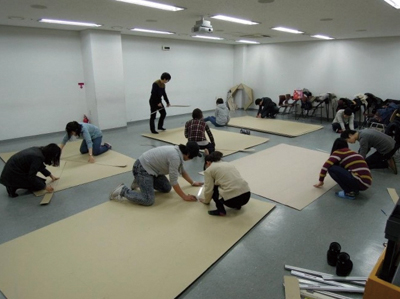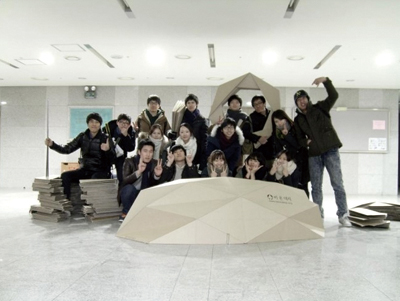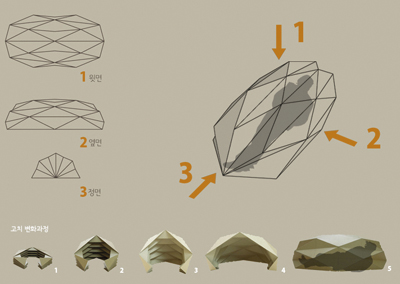
Recently, however, several odd looking three-dimensional cardboard boxes labeled “Be on degi” have been witnessed as being used around Euljiro 1-ga Station and City Hall Station.
These boxes are the final products of “Project: Cocoon,” made by the nonprofit design project group Be on Degi.
The cocoon-shaped box is also where their name Be on Degi finds its roots, coming from the word beondegi meaning chrysalis. When read just as written, the name Be on Degi in Korean describes the moist earth after rain.
“As a butterfly breaks open from its cocoon, we hope to see the homeless break free from the cardboard boxes and become a healthy and active member of society,” Kim Jee-hee (Architecture, 3) said.
With the hope and intention of offering their talents to those neglected by society, a group of university students majoring in architecture has come up with this project to help the homeless survive through this year’s harsh winter.

The project boxes function as protective windbreakers, which makes a great difference for the homeless who are usually unable to fight against the ruthless wind during winter.
According to the Be on Degi’s instructions, making a cocoon box is easier than it may seem. If 10 people put their heads together, it would take approximately 15 minutes to finish one shelter, which costs 7,500 won.
Branching off from the Associated University Architecture Society in May of 2011, the Be on Degi immediately stepped onto the streets.
As the group needed more information to come up with the best possible shelter for those neglected by society, Be on Degi started investigating locations where the homeless are concentrated.
The original plan was to conduct a 50 question survey, but they changed their mind to take another route and decided to observe the homeless.
Be on Degi went back to the homeless in June. For five consecutive days, members followed and observed a typical day of a homeless man.

“After five days of closely following the homeless, we realized that they also wanted to be respected and declared their own rights for privacy. We also found out that as the homeless do not necessarily have a settled and designated area to sleep in, they constantly wandered around,” Kim said.
With these factors in mind, Be on Degi finalized its design for “Project: Cocoon.” For the convenience of the homeless, the cocoon boxes only weigh one kilogram; it folds up for easy transport and protects privacy.
“We will continue this project up until March 2012, when the last cold snap threatens the health of the homeless,” Kim said. “Though this project will come to an end, Be on Degi will continue to establish design projects that offer a hand to the neglected society.”
Ko Min-seok
minseok_ko@ewhain.net

